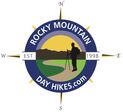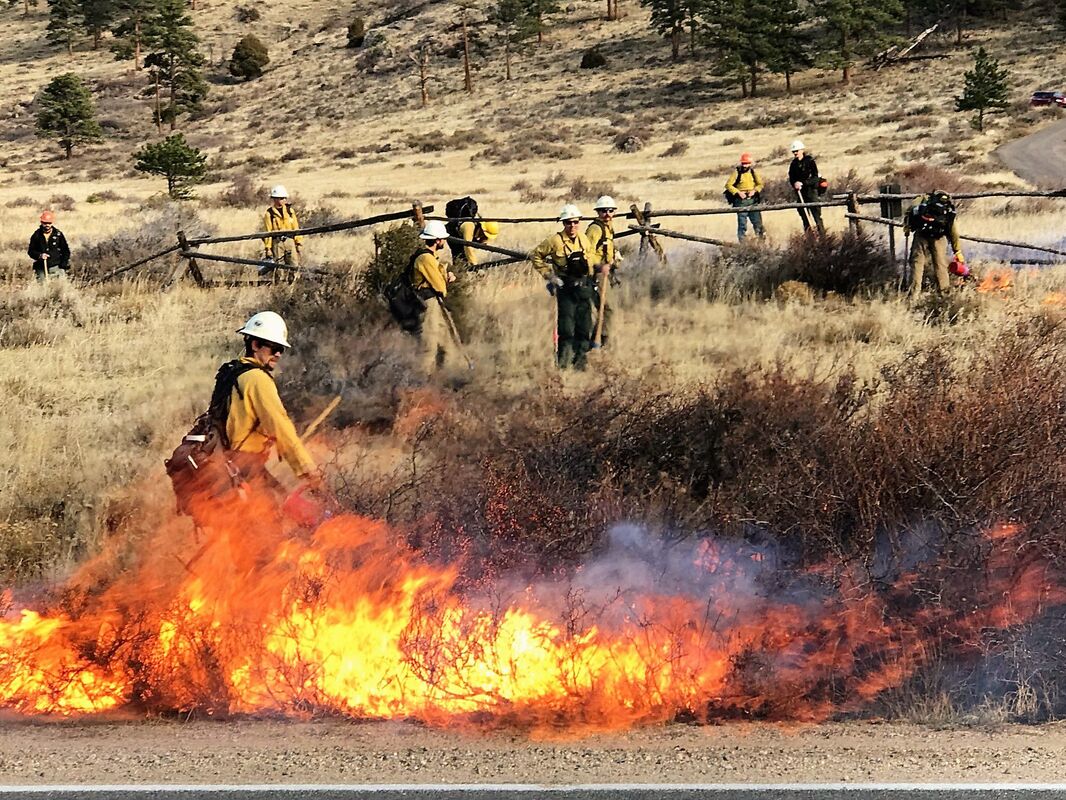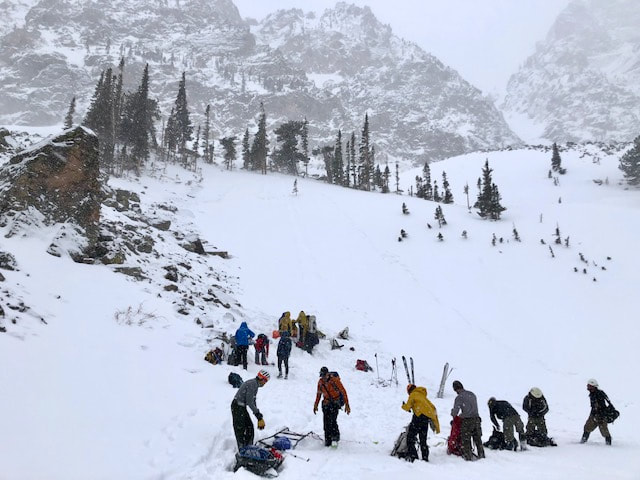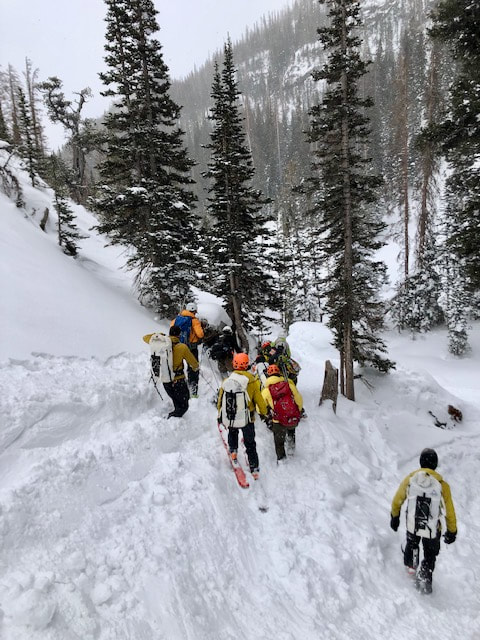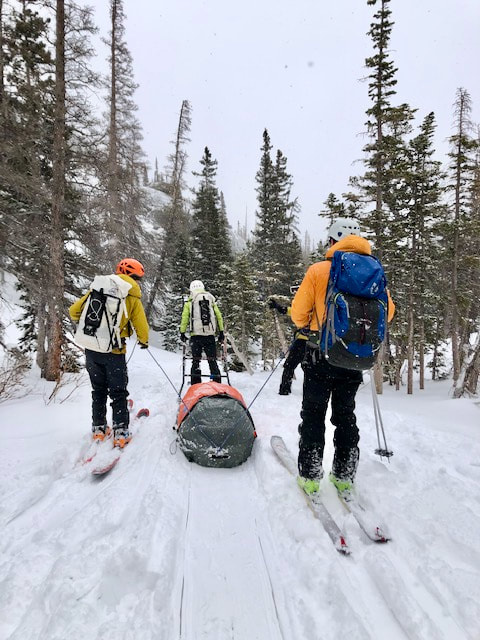|
Fire managers from Rocky Mountain National Park are preparing to conduct a prescribed burn in the South Lateral Moraine area, if favorable weather and fuel conditions allow. The area included for the prescribed burn is an approximate 200-acre section near Bear Lake Road between the Big Thompson Bridge and Hollowell Park. Burning may be conducted for several weeks in multiple segments to limit daily smoke production. The primary goal of the project is to reduce the threat of wildland fire to adjacent communities and park infrastructure by using prescribed fire to reduce the amount of fuel available in this area.
When fighting the East Troublesome Fire in 2020 and the Fern Lake Fire in 2012, firefighters were able to take advantage of previous and existing prescribed fire and hazardous fuels treatment areas that provided a buffer between the fire and the town of Estes Park. Prior hazard fuels projects were instrumental in stopping the fire from jumping Bear Lake Road and Trail Ridge Road. Depending on when weather and fuel conditions are suitable, prescribed burning operations may begin in March or any time through early spring. Ignitions will likely occur on weekdays with smoldering and smoke emissions lasting for an additional 3-10 days. If conditions are not suitable for the South Lateral Moraine Prescribed Burn, ongoing pile burning in the park may continue. Smoke may be visible both inside and outside the park. Every effort will be made to minimize smoke impacts on visitors and the adjacent community; however, some smoke is anticipated to disperse east of the park. Smoke may affect your health: For more information see https://www.colorado.gov/pacific/cdphe/wood-smoke-and-health How to protect your health from wood smoke Most healthy people have no more than minor and short-term health difficulties with wood smoke. However, excessive smoke can result in unhealthy or hazardous air quality. If smoke is affecting your health, contact your doctor or other health professional. www.colorado.gov . No trail or road closures are anticipated but visitors passing through active burning areas may be escorted by fire personnel to ensure their safety. Safety factors, weather conditions, air quality, personnel availability and environmental regulations are continually monitored as a part of any fire management operation. For more information please contact the park’s Information Office at (970) 586-1206.
0 Comments
Yesterday afternoon, Tuesday, February 9, park rangers were notified that a 21-year-old female from Texas had suffered serious injuries near Emerald Lake in Rocky Mountain National Park. The woman slid down a snow-covered slope approximately 70 to 100 feet into a talus slope on the south side of Emerald Lake. Rocky Mountain National Park Search and Rescue Team members provided advanced medical care. Team members used a Rescue Toboggan to transport the patient from Emerald Lake to the Bear Lake Trailhead where she was transported by ambulance to Estes Park Health and then taken to a nearby trauma center. No further information will be released at this time. RMNP Update
Each year to protect raptor nesting sites, Rocky Mountain National Park officials initiate temporary closures in areas of the park. To ensure that these birds of prey can nest undisturbed, specific areas within the park are closed temporarily to public use during nesting season and monitored by wildlife managers. Due to high nesting activity last year closures will begin earlier this year on February 15 rather than March 1. These closures will continue through July 31, if appropriate. These closures may be extended longer or rescinded at an earlier date depending on nesting activity. A new closure is being implemented in the Loch Vale area which includes Cathedral Wall. The areas above the Loch Vale-Sky Pond Trail are closed to off trail travel. In the Lumpy Ridge area closures include Checkerboard Rock, Lightning Rock, Batman Rock, Batman Pinnacle, Sundance, Thunder Buttress, The Parish, The Book, and Twin Owls, Rock One. These closures include the named formations. Closures include all climbing routes, outcroppings, cliffs, faces, ascent and descent routes and climber access trails to the named rock formations. Check the park’s website at www.nps.gov/romo/planyourvisit/area_closures.htm for updated information on raptor closures. The National Park Service is committed to preserving birds of prey. If nest sites are located or territorial behaviors such as aggressive divebombing/vocalizing or birds fleeing nest sites due to human disturbance are observed, please report the general location to [email protected]. The same cliffs that are critical for raptors also appeal to climbers. The cooperation of climbing organizations and individuals continues to be essential to the successful nesting of raptors in the park. For further information on Rocky Mountain National Park, please visit www.nps.gov/romo or call the park’s Information Office at (970) 586-1206. To protect the health of those who live, work, and visit national parks and National Park Service (NPS) facilities, and in support of President Biden’s Executive Order on Protecting the Federal Workforce and Requiring Mask-Wearing the NPS is immediately implementing a mask requirement for employees, visitors, partners and contractors. At Rocky Mountain National Park, face masks are now required in all park buildings and facilities.
Masks are also required on NPS-managed lands when physical distancing cannot be maintained, including narrow or busy trails, parking lots, pull-offs and overlooks. The public can find information about the requirement on the park website and on signs throughout the park. As conditions are subject to change, visitors should check the park’s website www.nps.gov/romo and social media channels @RockyNPS or call the park’s Information Office at (970) 586-1206 for details on operations before they visit. Other tips to recreate responsibly are available on NPS.gov. Park rangers are on duty to provide information, protect visitors and park resources, and uphold this requirement. |
RMNP UpdatesPress Releases from Rocky Mountain National Park and the Rocky Mountain Conservancy.
Archives
September 2025
|
rmnp updates
© Copyright 2025 Barefoot Publications, All Rights Reserved
